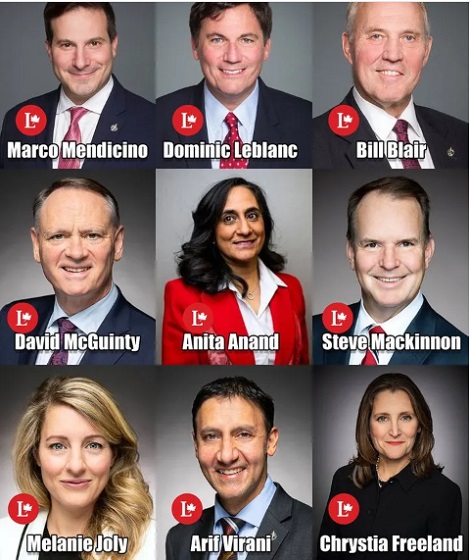Alberta
Pocklington is Gone But Feelings Remain

Pocklington is Gone But Feelings Remain
Conflict decorates every yard of the sports world’s journey these days. If you can find an easy yes or no on such issues as relaxing COVID-19 precautions and finding agreement on matters like schedules and salary levels that happen year after year, you’re much smarter than I am.
Given the size of this emotional upheaval, this is the perfect time for Peter Pocklington and all the controversial memories tied to his name to remind all of us. yes again, that there probably would no National Hockey League team in Edmonton but for him, and the brilliance shown by the 1980 Edmonton Oilers would not be part of this city’s, or this province’s remarkable hockey history.
All it took to get the old fires burning was a simple public letter in which Peter Puck congratulated captain/coach/general manager Kevin Lowe on his induction into the Hockey Hall of Fame.
In less than a day, this familiar question was raised in my hearing at least once: does Pocklington also belong in the Hall that welcomed Lowe, Oilers general manager Ken Holland and four others earlier this week?
Without the slightest doubt, many in and around Alberta believe his act of buying the Oilers when they were in the old World Hockey Association and later becoming an owner in the WHA and part of the 1979-80 National Hockey League expansion. The team’s massive record for much of the next decade provides strong unspoken testimony in his behalf.
Had Wayne Gretzky not been part of the WHA’s expansion package, it’s fair to argue the expansion might never have happened. Slim and young, the budding superstar was an Oiler only because of Pocklington’s transaction with old friend Nelson Skalbania, who lost ample amounts while operating the Indianapolis Racers, who never became part of any expansion talk.
Ultimately, as the record shows, Pocklington’s instincts and diminishing financial stability led to loss of team control after years of operating on a line of credit with Alberta Treasury Branches. Money was exchanged, in addition to players, in the vast majority of trades under the control of Pocklington and Glen Sather.
Gretzky brought about $15 million from the Los Angeles Kings. “I was not traded,” Wayne said. “I was sold.”
Promising centre Jimmy Carson came to Alberta as part of the swap and later netted $5 million when he went to the Detroit Red Wings. Mark Messier, Jari Kurri and Paul Coffey also brought cash when they were moved.
David Cruise, co-author of a later book on hockey’s finances, summed things up, “The picture’s clear; the Oilers trade their assets for money.” A parallel was drawn between athletes and automobiles: “Buy the car, get as much mileage out of it as you can, then you sell it just before the block breaks.”
Many parallels have been drawn between Pocklington, found guilty in more than a few financial free-for-alls outside of hockey, and former Toronto Maple Leafs president Harold Ballard, the team’s alternate governor when the Leafs won Stanley Cups in 1962, 1963 and 1967 – the last time the Leafs have taken home the championship.
Ballard also spent time in jail, convicted on up to 47 charges of fraud. He embarrassed many Leaf greats, notably Darryl Sittler, Lanny MacDonald and Dave Keon, as well as respected coach Roger Neilson. In addition, Pal Hal defied NHL president John Ziegler on many resolutions – once refusing to put players names on jerseys.
But Ballard is in the Hockey Hall of Fame. Pocklington is on the outside. According to numerous critics, that’s where he belongs. It seems reasonable to bet the debate will rise again. Probably next year, at Hall of Fame selection time.
Alberta
Low oil prices could have big consequences for Alberta’s finances

From the Fraser Institute
By Tegan Hill
Amid the tariff war, the price of West Texas Intermediate oil—a common benchmark—recently dropped below US$60 per barrel. Given every $1 drop in oil prices is an estimated $750 million hit to provincial revenues, if oil prices remain low for long, there could be big implications for Alberta’s budget.
The Smith government already projects a $5.2 billion budget deficit in 2025/26 with continued deficits over the following two years. This year’s deficit is based on oil prices averaging US$68.00 per barrel. While the budget does include a $4 billion “contingency” for unforeseen events, given the economic and fiscal impact of Trump’s tariffs, it could quickly be eaten up.
Budget deficits come with costs for Albertans, who will already pay a projected $600 each in provincial government debt interest in 2025/26. That’s money that could have gone towards health care and education, or even tax relief.
Unfortunately, this is all part of the resource revenue rollercoaster that’s are all too familiar to Albertans.
Resource revenue (including oil and gas royalties) is inherently volatile. In the last 10 years alone, it has been as high as $25.2 billion in 2022/23 and as low as $2.8 billion in 2015/16. The provincial government typically enjoys budget surpluses—and increases government spending—when oil prices and resource revenue is relatively high, but is thrown into deficits when resource revenues inevitably fall.
Fortunately, the Smith government can mitigate this volatility.
The key is limiting the level of resource revenue included in the budget to a set stable amount. Any resource revenue above that stable amount is automatically saved in a rainy-day fund to be withdrawn to maintain that stable amount in the budget during years of relatively low resource revenue. The logic is simple: save during the good times so you can weather the storm during bad times.
Indeed, if the Smith government had created a rainy-day account in 2023, for example, it could have already built up a sizeable fund to help stabilize the budget when resource revenue declines. While the Smith government has deposited some money in the Heritage Fund in recent years, it has not created a dedicated rainy-day account or introduced a similar mechanism to help stabilize provincial finances.
Limiting the amount of resource revenue in the budget, particularly during times of relatively high resource revenue, also tempers demand for higher spending, which is only fiscally sustainable with permanently high resource revenues. In other words, if the government creates a rainy-day account, spending would become more closely align with stable ongoing levels of revenue.
And it’s not too late. To end the boom-bust cycle and finally help stabilize provincial finances, the Smith government should create a rainy-day account.
Alberta
Governments in Alberta should spur homebuilding amid population explosion

From the Fraser Institute
By Tegan Hill and Austin Thompson
In 2024, construction started on 47,827 housing units—the most since 48,336 units in 2007 when population growth was less than half of what it was in 2024.
Alberta has long been viewed as an oasis in Canada’s overheated housing market—a refuge for Canadians priced out of high-cost centres such as Vancouver and Toronto. But the oasis is starting to dry up. House prices and rents in the province have spiked by about one-third since the start of the pandemic. According to a recent Maru poll, more than 70 per cent of Calgarians and Edmontonians doubt they will ever be able to afford a home in their city. Which raises the question: how much longer can this go on?
Alberta’s housing affordability problem reflects a simple reality—not enough homes have been built to accommodate the province’s growing population. The result? More Albertans competing for the same homes and rental units, pushing prices higher.
Population growth has always been volatile in Alberta, but the recent surge, fuelled by record levels of immigration, is unprecedented. Alberta has set new population growth records every year since 2022, culminating in the largest-ever increase of 186,704 new residents in 2024—nearly 70 per cent more than the largest pre-pandemic increase in 2013.
Homebuilding has increased, but not enough to keep pace with the rise in population. In 2024, construction started on 47,827 housing units—the most since 48,336 units in 2007 when population growth was less than half of what it was in 2024.
Moreover, from 1972 to 2019, Alberta added 2.1 new residents (on average) for every housing unit started compared to 3.9 new residents for every housing unit started in 2024. Put differently, today nearly twice as many new residents are potentially competing for each new home compared to historical norms.
While Alberta attracts more Canadians from other provinces than any other province, federal immigration and residency policies drive Alberta’s population growth. So while the provincial government has little control over its population growth, provincial and municipal governments can affect the pace of homebuilding.
For example, recent provincial amendments to the city charters in Calgary and Edmonton have helped standardize building codes, which should minimize cost and complexity for builders who operate across different jurisdictions. Municipal zoning reforms in Calgary, Edmonton and Red Deer have made it easier to build higher-density housing, and Lethbridge and Medicine Hat may soon follow suit. These changes should make it easier and faster to build homes, helping Alberta maintain some of the least restrictive building rules and quickest approval timelines in Canada.
There is, however, room for improvement. Policymakers at both the provincial and municipal level should streamline rules for building, reduce regulatory uncertainty and development costs, and shorten timelines for permit approvals. Calgary, for instance, imposes fees on developers to fund a wide array of public infrastructure—including roads, sewers, libraries, even buses—while Edmonton currently only imposes fees to fund the construction of new firehalls.
It’s difficult to say how long Alberta’s housing affordability woes will endure, but the situation is unlikely to improve unless homebuilding increases, spurred by government policies that facilitate more development.
-

 2025 Federal Election1 day ago
2025 Federal Election1 day agoPoilievre Campaigning To Build A Canadian Economic Fortress
-

 Automotive1 day ago
Automotive1 day agoCanadians’ Interest in Buying an EV Falls for Third Year in a Row
-

 2025 Federal Election2 days ago
2025 Federal Election2 days agoTrump Has Driven Canadians Crazy. This Is How Crazy.
-

 conflict2 days ago
conflict2 days agoTrump tells Zelensky: Accept peace or risk ‘losing the whole country’
-

 armed forces16 hours ago
armed forces16 hours agoYet another struggling soldier says Veteran Affairs Canada offered him euthanasia
-

 conflict16 hours ago
conflict16 hours agoWhy are the globalists so opposed to Trump’s efforts to make peace in Ukraine?
-

 2025 Federal Election2 days ago
2025 Federal Election2 days agoCarney Liberals pledge to follow ‘gender-based goals analysis’ in all government policy
-

 2025 Federal Election2 days ago
2025 Federal Election2 days agoPoilievre’s Conservatives promise to repeal policy allowing male criminals in female jails








